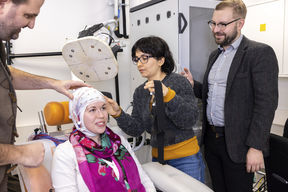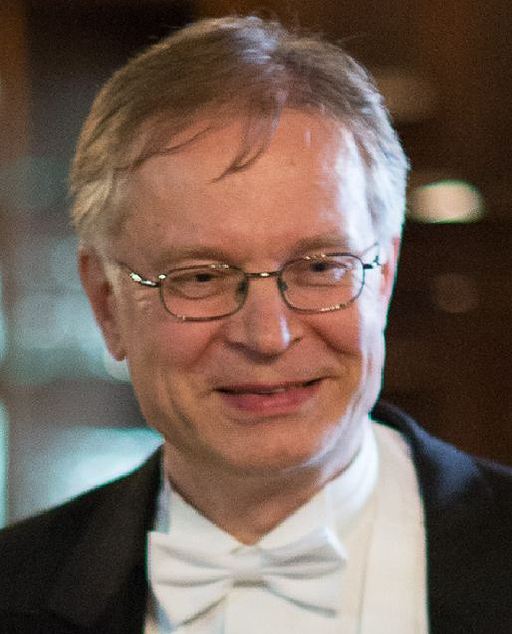Researchers at Aalto develop a new technology to let immobilized patients control devices with their brain

A new project at Aalto University is developing techniques that will enable immobilized patients to control devices using their brain activity. The project builds on the multi-locus transcranial magnetic stimulation (mTMS) technology developed at Aalto, adapting it into a brain–computer interface (BCI) that can help patients with neurological conditions.
‘Our aim is to enable patients to control various instruments with the power of thought, for example by imagining moving their arm. With personalized technology, we could use brain measurements to detect the intention to move the arm nearly in real time and apply that for motor rehabilitation,’ says Adjunct Professor Pantelis Lioumis, research fellow at Aalto University who is leading the new project. The BCI will combine mTMS with EEG technology of Bittium Biosignals, a partner in the research.
The EEG system allows real-time data streaming, which provides brain signals as input to the mTMS system. The mTMS system can then stimulate another region of the patient’s brain—thus, quite remarkably, activity in one part of the brain can be used to stimulate another. Because mTMS shifts the stimulation location electronically, specific areas can be rapidly and precisely activated, guided by the EEG readings.
The mTMS system, developed at Aalto as part of an international research project led by Aalto’s Professor Risto Ilmoniemi, can provoke limb twitches by stimulating the motor cortex. ‘A robot controlled by algorithms, instead of a therapist, will stimulate the brain, and it will be able to shift the stimulation location electronically and automatically depending on how the brain reacts. With the technology we’ve developed so far, it’s already possible to control the stimulation based on real-time brain signals,’ says Ilmoniemi.

The right time and place
It’s vital that the correct brain area be stimulated at the right time and in the right place. Because electromagnetic interference produced by TMS can be tens of thousands of times stronger than the EEG signals, the TMS masks the EEG waveform.
‘We need to be able to extract invisible EEG information—in this case, a patient’s intention to move their arm. That means we have to remove the harmful interference in real time,’ says Jukka Kinnunen, a sales manager at Bittium Biosignals. Lioumis explains that work is needed to develop algorithms capable of distinguishing between imagining different movements produced by different limbs. This part of the work is done in collaboration with Dr. Ivan Zubarev and PhD student Matilda Makkonen.
‘This is largely a development of mathematical methods,’ adds Simo-Pekka Simonaho, Product Manager at Bittium Biosignals.
This technology could also be used to treat other conditions related to brain activity, according to Lioumis.‘In the future, this approach could also be used to treat depression, where positive and negative thoughts can also be seen as activity in the brain,’ he says. That activity is usually located in the prefrontal cortex, but this varies across patients, and BCI–TMS could be used to deliver personalized therapy. Because depression arises from a network of interactions between different brain parts instead of from a single location, treating it will also require further refinement of mTMS to deliver more complex stimulation patterns—something Lioumis and Ilmoniemi’s research team are working on.
To succeed, this project will pull together skills and expertise from many fields, including engineering, neurobiology and psychology. Dr. Sabin Sathyan, a researcher working on the project, will spend a year at Aalto and then a year at Bittium Biosignals. The Brain-Computer Interface for Automated EEG-guided Brain Stimulation project is funded by the Finnish Research Impact Foundation.
Further information:

Playing with the music of the brain
Common neurological disorders like depression and chronic pain can be challenging to treat with conventional methods. An automated version of a long-used brain stimulation technique holds real promise as a reliable and effective drug-free alternative.

Read more news

Unite! Seed Fund 2026: Open for applications
The 2026 Unite! Seed Fund call is officially open, offering funding across three strategic lines: Student Activities, Teaching and Learning, and Research and PhD. Deadline for applications is 20 March 2026.
Apply now: Unite! Seed Fund 2026 - Student Call
The Unite! Seed Fund call for 2026 is now open for students. Apply now for up to €20,000 per project, involving at least two Unite! Universities. Deadline for applications is 20 March 2026.






